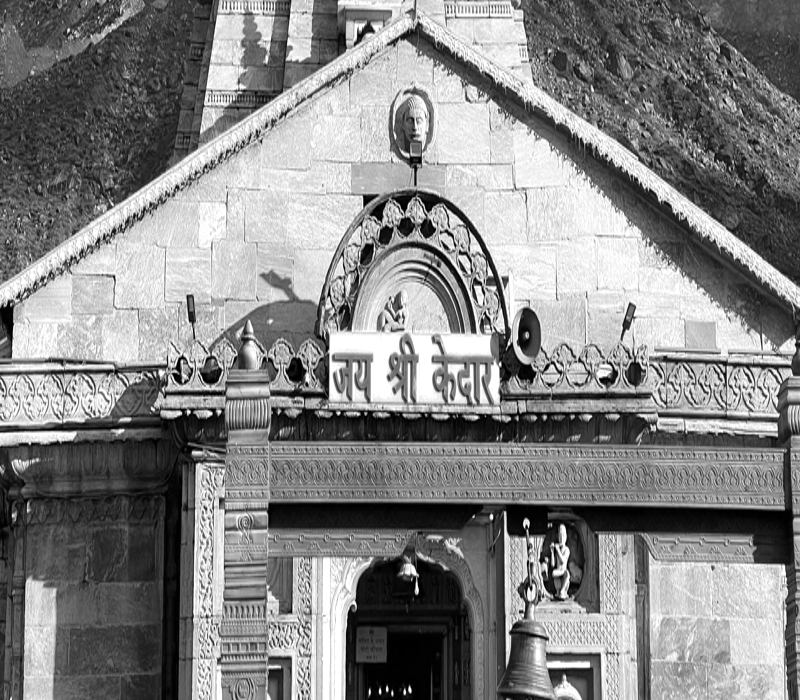- Offices: Dehradun | Dwarka New Delhi
Dugdh Tal Lake, nestled in the serene Chamoli district of Uttarakhand, is a pristine high-altitude lake renowned for its unparalleled natural beauty and tranquil surroundings. Often referred to as the "Milky Lake" due to its clear and milky-white appearance, this hidden gem attracts nature lovers, adventure enthusiasts, and spiritual seekers alike. Situated amidst the towering peaks of the Garhwal Himalayas, Dugdh Tal is not just a visual treat but also a place of cultural and ecological significance. The lake’s remote location, combined with the breathtaking landscapes that surround it, makes it an ideal destination for those looking to escape the hustle and bustle of city life.
Location and Accessibility
Dugdh Tal is located in the Chamoli district, a region celebrated for its rich natural and cultural heritage. The lake lies at an elevation of approximately 3,000 meters above sea level, making it an accessible yet offbeat destination for trekkers. Chamoli district itself is part of the Garhwal division of Uttarakhand, known for its picturesque valleys, alpine meadows, and spiritual landmarks.
Reaching Dugdh Tal involves a moderate trek through lush forests, undulating meadows, and rocky terrain. The nearest major town is Joshimath, which serves as a base for several treks in the region. Joshimath is well-connected by road to Rishikesh and Haridwar, which are major transport hubs in Uttarakhand. From Joshimath, one can hire local guides and porters to navigate the trails leading to Dugdh Tal. The trek, which typically takes 2-3 days, is a rewarding journey filled with stunning vistas and encounters with diverse flora and fauna.
Historical and Cultural Significance
Dugdh Tal holds a special place in local folklore and traditions. The lake is believed to have spiritual significance, with locals considering it a sacred site. According to legends, the lake’s milky appearance is attributed to blessings from the gods, making it a revered spot for offerings and rituals. Pilgrims often visit Dugdh Tal during auspicious occasions to seek blessings and connect with the divine.
Historically, Chamoli district has been a vital region in the cultural and spiritual landscape of Uttarakhand. It is home to several ancient temples and pilgrimage routes, including those leading to Badrinath, one of the Char Dhams. The presence of Dugdh Tal further enriches the district’s spiritual aura, serving as a serene retreat for meditation and introspection.
Nearby Attractions
Chamoli district is a treasure trove of natural and cultural attractions. While Dugdh Tal is a highlight in its own right, visitors can explore several nearby destinations to enhance their experience:
- Valley of Flowers National Park: A UNESCO World Heritage Site, this park is renowned for its vibrant alpine meadows that bloom with a variety of flowers during the monsoon season. It’s a haven for botanists, photographers, and nature enthusiasts.
- Hemkund Sahib: Located at a higher altitude, Hemkund Sahib is a revered Sikh pilgrimage site surrounded by seven snow-capped peaks. The crystal-clear Hemkund Lake and the spiritual ambiance make it a must-visit.
- Badrinath Temple: One of the Char Dhams, Badrinath Temple is dedicated to Lord Vishnu and attracts pilgrims from across the country. Its proximity to Dugdh Tal makes it a convenient addition to the itinerary.
- Auli: Known as a premier skiing destination in India, Auli offers stunning views of Nanda Devi and other Himalayan peaks. It’s a great spot for adventure sports or simply soaking in the beauty of the mountains.
- Nanda Devi National Park: Part of the Nanda Devi Biosphere Reserve, this park is known for its unique biodiversity and the majestic Nanda Devi peak. Treks to this park offer a chance to witness untouched wilderness.
Trekking and Camping
The journey to Dugdh Tal is as mesmerizing as the destination itself. Trekkers can set up camps near the lake, surrounded by alpine meadows and rhododendron forests. The clear night skies offer an excellent opportunity for stargazing, adding to the allure of camping at this remote location.
Bird Watching and Photography
The area around Dugdh Tal is rich in biodiversity, making it a paradise for bird watchers and photographers. Rare Himalayan birds can often be spotted near the lake, and the changing hues of the landscape provide endless opportunities for capturing stunning photographs.
Best Time to Visit
The best time to visit Dugdh Tal is from May to October, when the weather is pleasant and the trekking routes are accessible. During this period, the snow from the winter months melts, revealing lush greenery and blooming flowers. Each season offers a unique charm:
- Summer (May to June): The weather is mild, with clear skies and comfortable temperatures, making it ideal for trekking and camping.
- Monsoon (July to September): While the monsoon brings occasional rainfall, it’s also the time when the surrounding meadows come alive with vibrant flora. However, visitors should be cautious of slippery trails and landslides.
- Autumn (October): The post-monsoon season offers crisp air, clear views of the mountains, and vibrant autumn colors, making it one of the best times for photography.
Dugdh Tal in Chamoli district is a destination that offers a perfect blend of natural beauty, spiritual significance, and adventure. Its serene environment and the journey to reach it provide a sense of fulfilment and connection with nature. Whether you are a trekker, a spiritual seeker, or someone looking for a peaceful retreat, Dugdh Tal promises an unforgettable experience. Plan your visit to this hidden gem and immerse yourself in the untouched splendor of Uttarakhand’s Himalayas.

